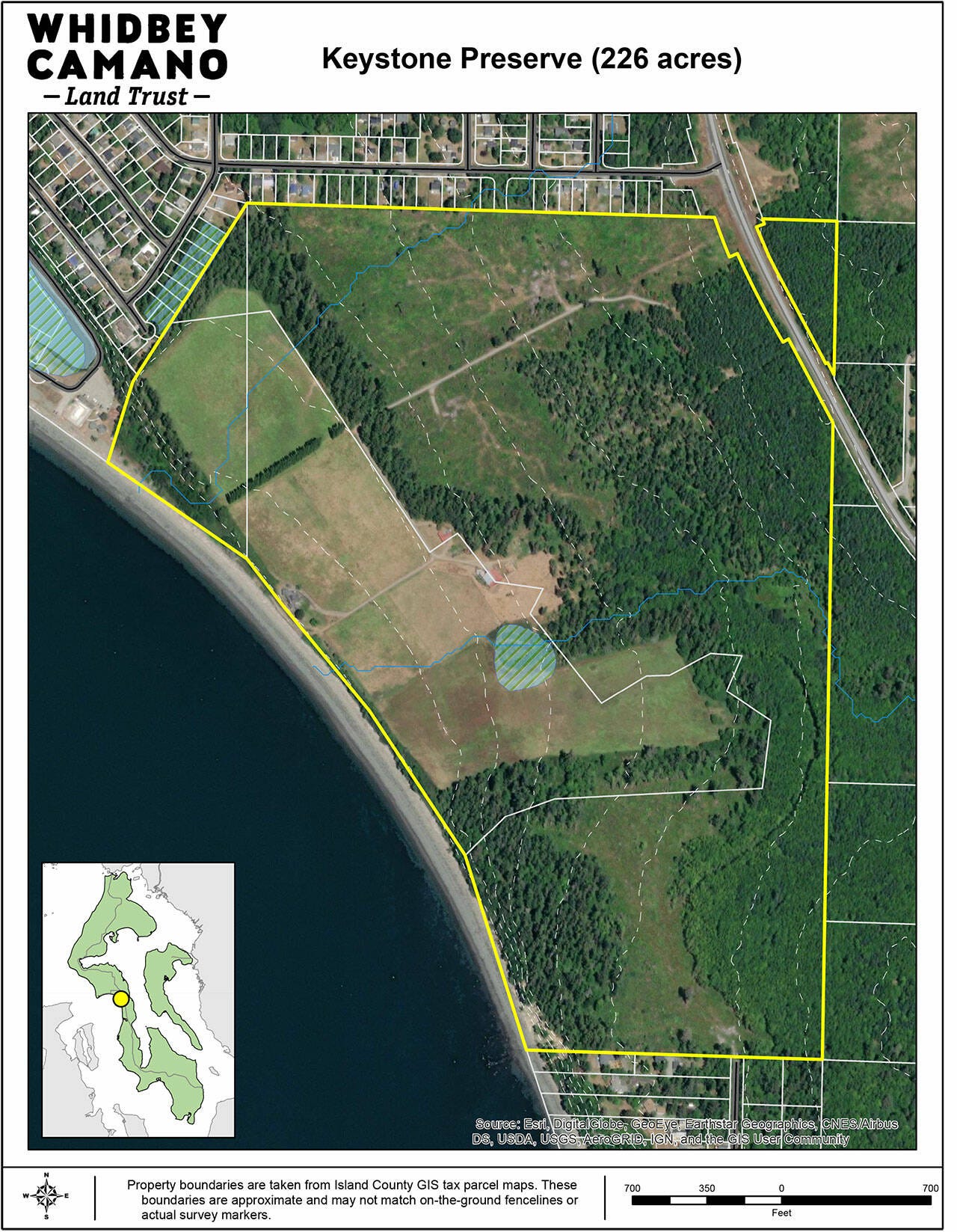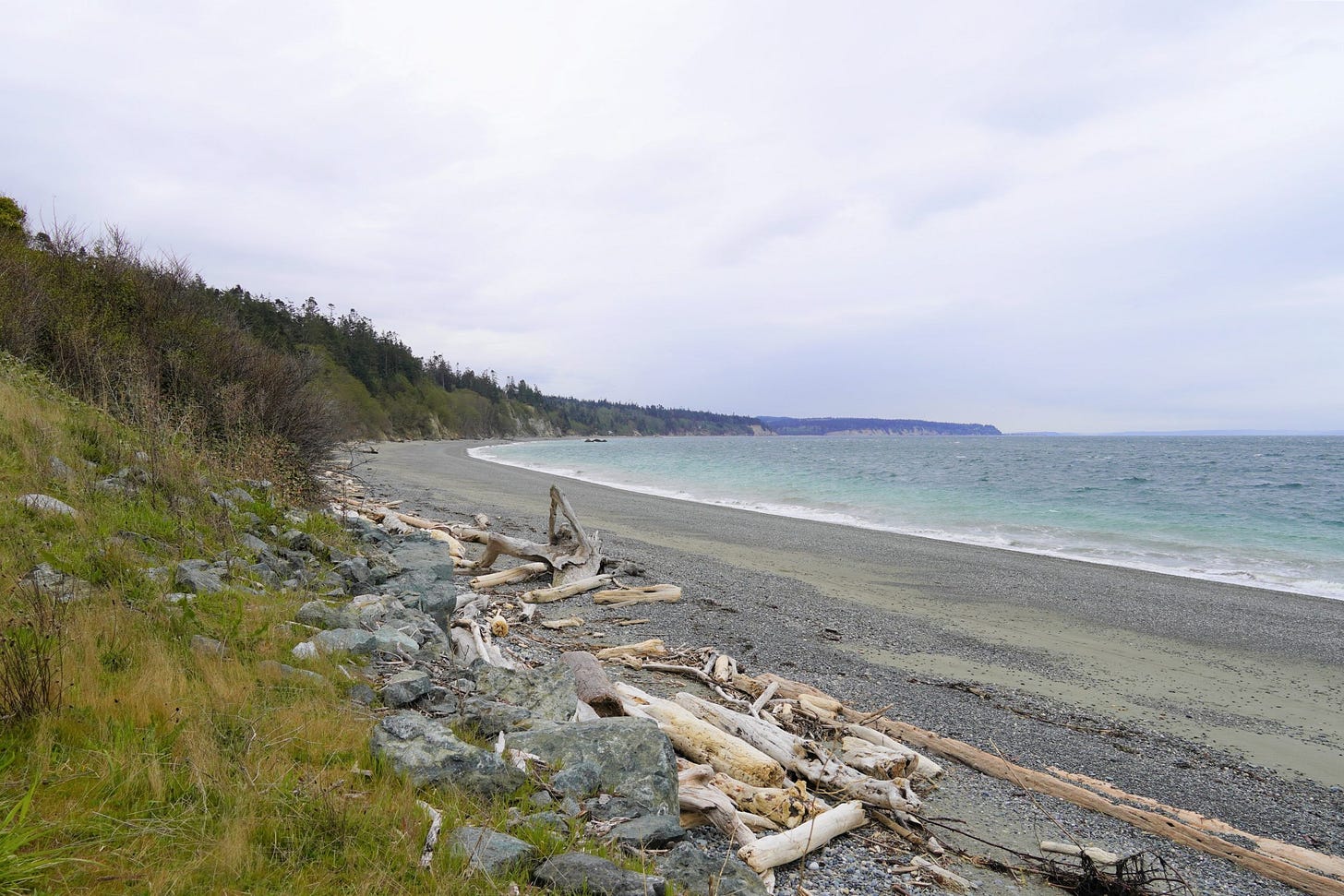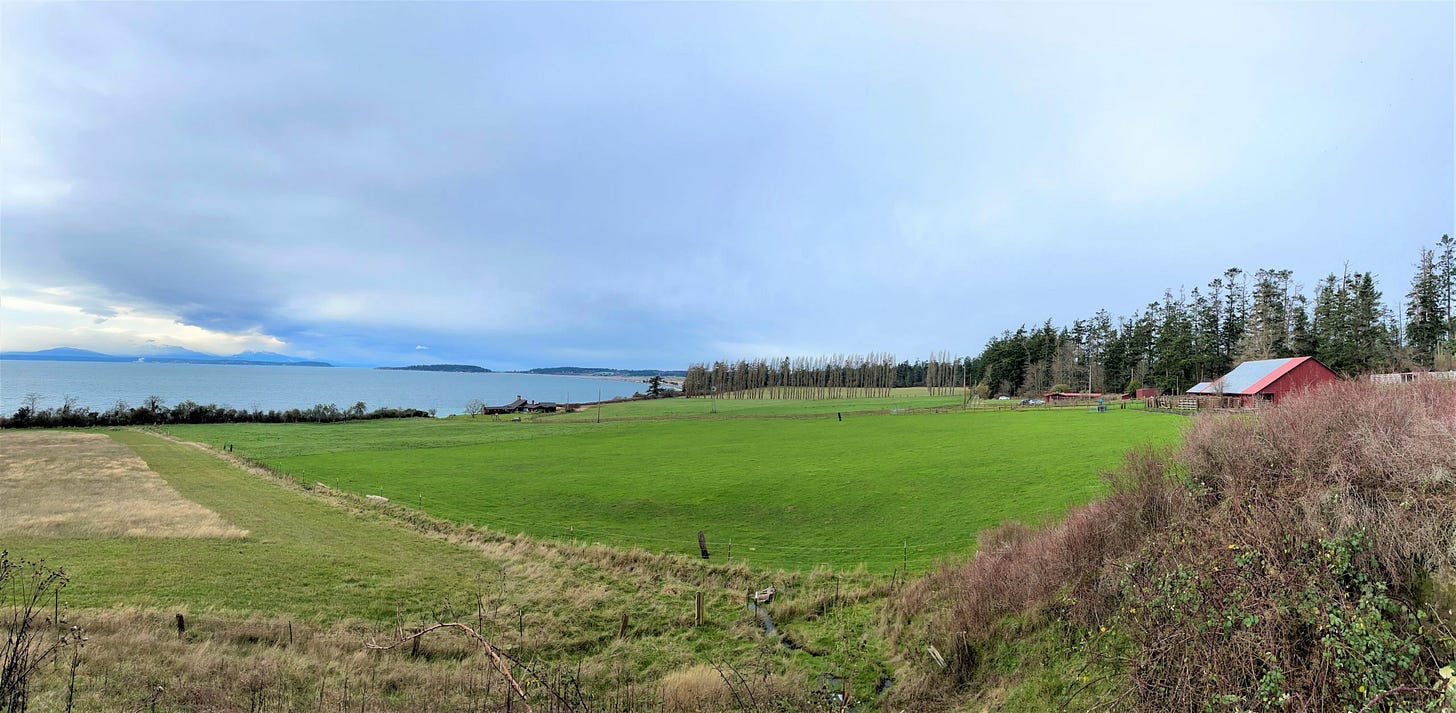In the first three parts123, we came to understand that the dispossession and displacement of my ancestors in Scotland and of the indigenous population of my home on Whidbey Island were connected in a giant feedback loop, and that the institution of the family farm, built on this shaky foundation, is under pressure in both places.
In this post, we’ll look at a way forward.
An emergency acquisition
The Robertson Farm at Lea Bluffs, which we discussed in part one, was one of those family farms feeling the pinch. Falling outside of the Ebey’s Prairie Reserve, it was neither protected from development nor eligible for grants to help with upkeep. In December 2021, the owner decided to sell for development. Fortunately, the Whidbey Camano Land Trust was able to move quickly in an “emergency acquisition4” to save the property5 with bridge loans which it was able to pay back later with grants and private donations.
The Whidbey Camano Land Trust has completed the most expensive acquisition in its history, protecting 226 acres of amazing coastal farm and forest on Admiralty Bay near Coupeville. The property, to be known as the Keystone Farm and Forest Preserve, includes two-thirds of a mile of shoreline, 175 acres of forest, and one of the oldest farms on Whidbey Island. It has long been a Land Trust conservation priority, but its protection became urgent last December when it was placed on the market to be sold for high-end homesite development.
Those high-end home sites would have been twenty-two ten-acre lots. This development pattern typically involves a home, outbuildings, a driveway, a lawn, a well, and a septic system. Groundwater recharge is reduced, and wildlife corridors are disrupted. It’s a paradox that the best way to protect land from the pressures of private ownership is to own it, and the land trust does great work in moving land out of harm’s way. In previous work on Puget Sound and salmon recovery, I’ve been proud to support grant funding their acquisitions.
When the land trust asked the Sons of the Beach6 hiking group to participate in a focus group on hiking trails in the new preserve, I was happy to step up. As a kayaker and open water swimmer, I was also excited about 3500 feet of accessible shoreline in a county where private ownership has limited public access to just 60 sites in 200 miles of shoreline.
Other focus groups will follow as will consultations with the tribes on how to honor their connection to this land. Archaeologists will be on hand to look out for cultural artifacts that may be uncovered during removal of a later structure near the beach.
The property also includes the working farm first established by William Robertson in the 1850s. While the land trust has conservation easements on other farms, this is the first time they’ve owned one or been tasked with its management. The land trust turned to Whidbey Island’s Organic Farm School7 to help out. The focus group found me sitting next to OFS Executive Director
, who quickly agreed to meet later to talk about the farm school’s plans for Keystone.“I think we’ve found it”
A week later, after a tour of the school, Judy and I sat down to discuss her plans for the Keystone farm. She told me that she’d been in conversation with Ryan Elting, then conservation director and now executive director of the land trust, for a number of years about the possibility of cooperation. They were looking for an incubator site, where young farmers graduating from this and other farm schools might find affordable land, shared resources, and mentoring to help them get started.
“I think we’ve found it”, Ryan said, as he called Judy with news of the Keystone acquisition.
Judy explained the plan to offer recent graduates short-term leases to plots of land within the farm, small at first, commensurate with their level of experience. A few more experienced farmers would be given longer-term leases in exchange for mentoring and oversight. Tractors and other tools would belong to the community and be available to tenants to help keep down the startup costs. After years of grazing and hay production, it’s going to take a while to amend the soil. There are Canada thistles to eradicate, which means it will be a while before the farm can be certified organic. There will be no livestock, as it’s too hard on the land, but maybe some chickens to help regeneration.
Access to land is just one of the headwinds facing local farmers. Another is access to markets. While we have farmers markets8, attending means losing a day of farming to compete with other farms selling the same crops. And farm stands9 rely on the honor system, which is precarious in these times. CSAs are seasonal, and not everyone likes that many root vegetables! Enter Whidbey Island Grown10.
Whidbey Island Grown Cooperative is a multi-stakeholder cooperative which includes three membership categories: Producers who grow and make our food, Buyers like restaurants, caterers, shops and markets who buy food to cook and/or resell, and Community Members who eat the food and shop at the businesses.
Whidbey Island Grown offers a central point for producers to sell their food. WIG puts food where consumers can find it, at order pickup points but also in the supermarket, where local products are placed right alongside those coming from the big distribution centers.
The third headwind is community. This may be a tougher nut to crack. Judy explained to me that while most students express a desire to farm cooperatively, many wind up deciding to go it alone. The idea of homesteading, alongside the myth of rugged individualism and the romance of the family farm, have deep roots in the American psyche.
I’ll add a fourth headwind, which is a lack of affordable housing. A next step would be to build a cluster of housing on the farm, so that farmers could live where they work. If this is starting to sound like a return to the way my ancestors lived in Scotland before the clearances, then you and I are dreaming the same dream.
Land back
All of this is not an undoing of colonial harm. Much more needs to be done to bring access to land to Native Americans and people of color. In a primer on the Land Back movement11, B. ‘Toastie’ Oaster explains:
…land ownership is an illusion, no more possible than ownership of a rainbow.
and follows
Westerners often struggle to leave room for possibilities like the peaceful communal ownership of land. But the practice of communal landholding has precedent and has supported stable civilizations for hundreds of generations.
We’re witnessing a baby step towards that future: a future in which many more people have access to land to grow nutritious food for all.








Lovely to hear your voice narrating john. It is so interesting to hear about the efforts of humans to make a life in a very specific place. There has been so much change, error, slow learning and unlearning. This restorative project sounds wonderful and I hope there is much success in it for all.
Thank you did sharing this series. This is an exciting development. Wonderful to hear about this happening in my region (I live in Bellevue).